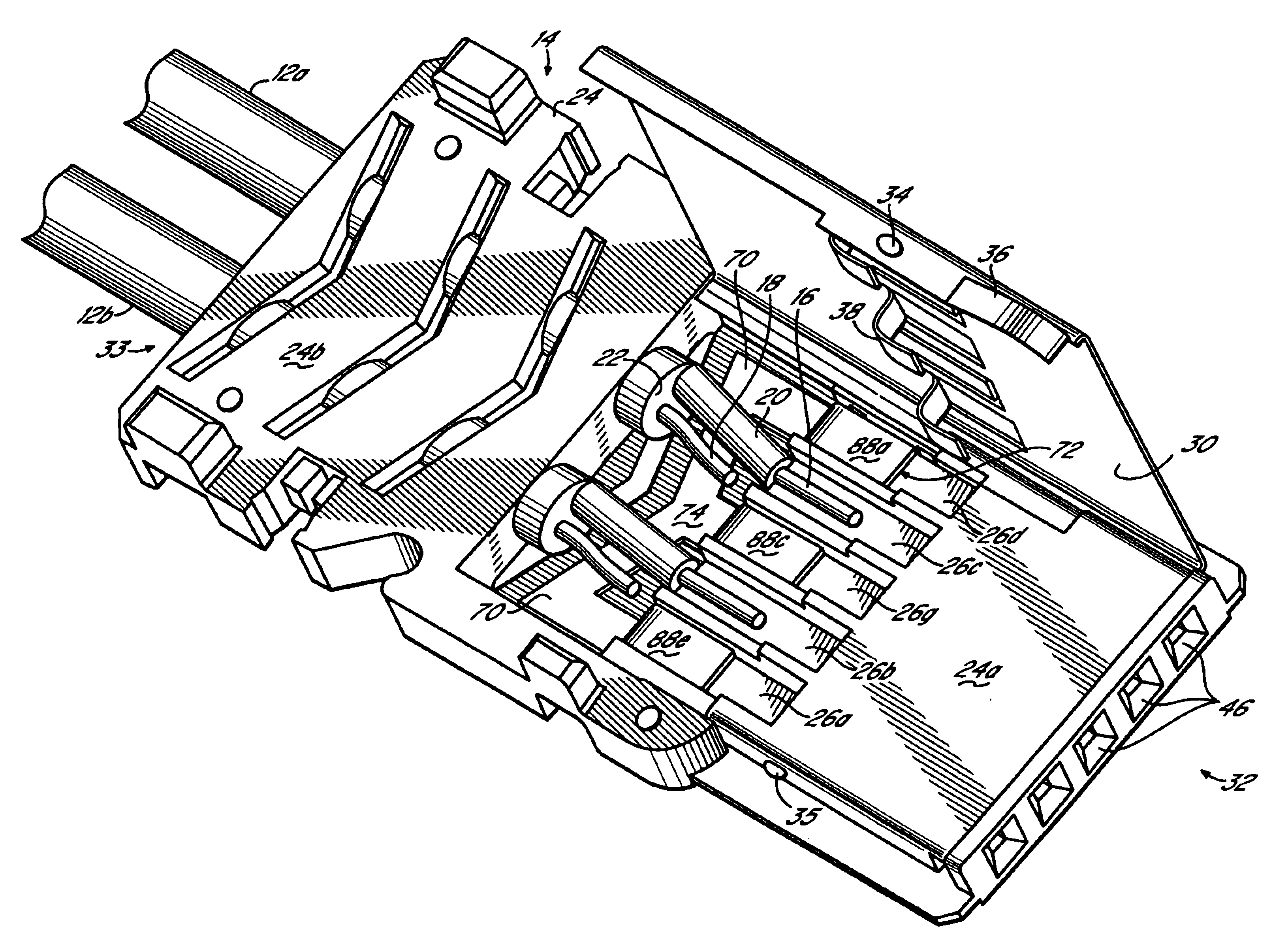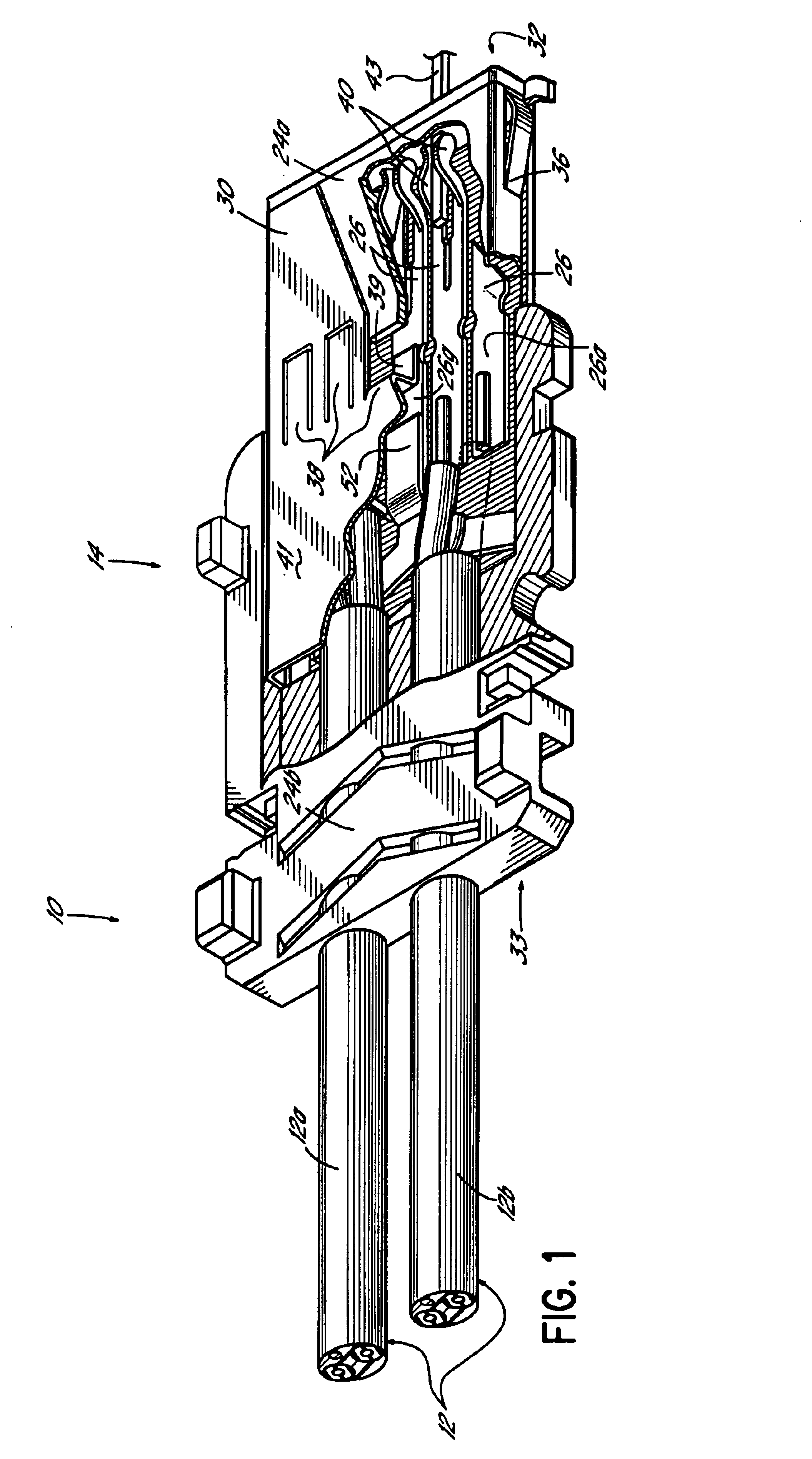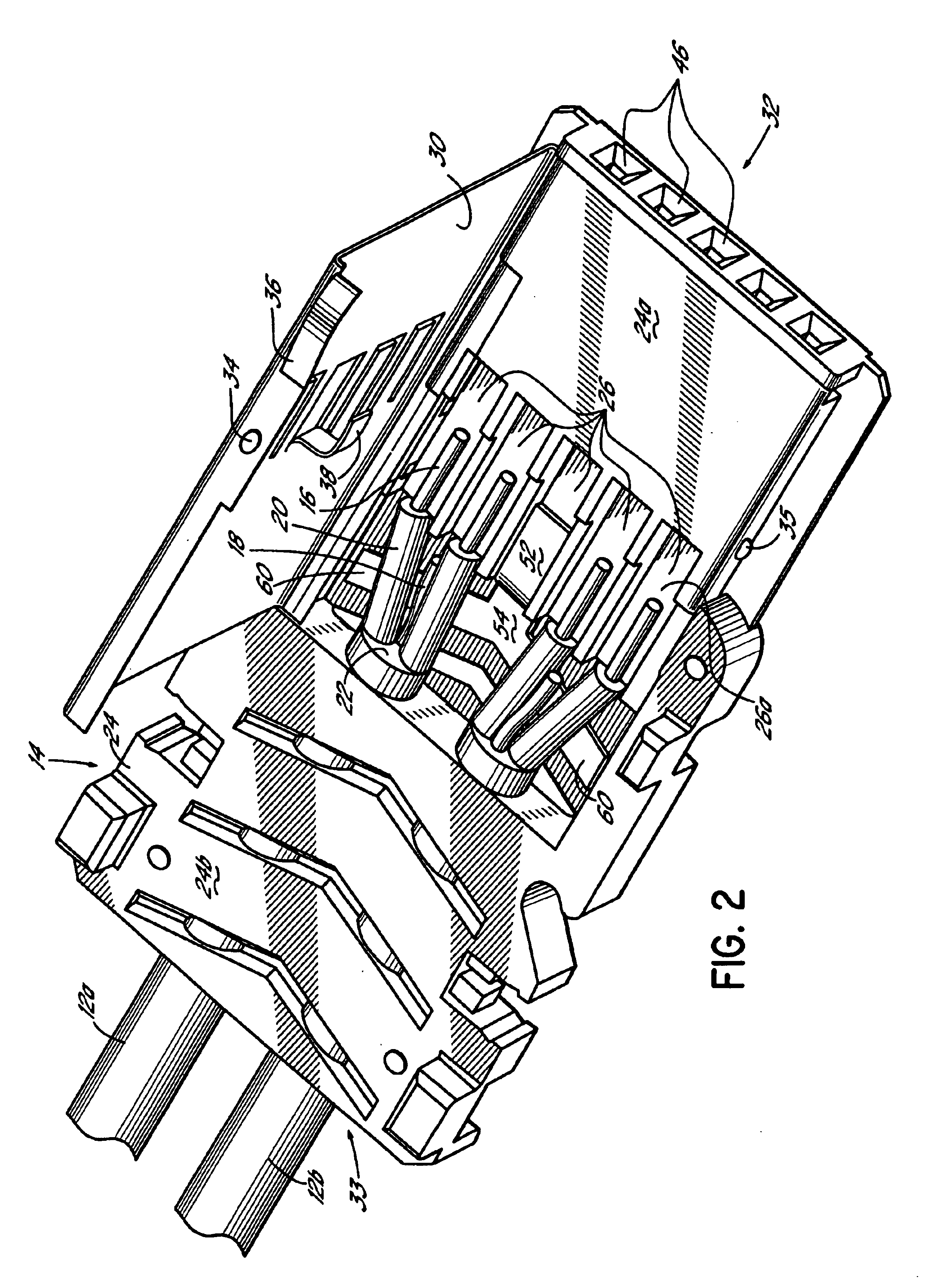Cable structure with improved grounding termination in the connector
a technology of grounding termination and cable structure, which is applied in the direction of connection contact member material, two-part coupling device connection, and connection device connection, etc., can solve the problems of large or bulky connector structure, large size of connector structure, and general less robust design. , to achieve the effect of improving the signal integrity of the cable structure, reducing the possibility of signal conductor shorting to ground, and keeping the size of the connector structure suitably compa
- Summary
- Abstract
- Description
- Claims
- Application Information
AI Technical Summary
Benefits of technology
Problems solved by technology
Method used
Image
Examples
Embodiment Construction
FIG. 1 is a perspective view, partially cut away, illustrating one embodiment of the present invention. Cable structure 10 comprises one or more cable portions or transmission lines 12 terminating in a connector 14. In the embodiment illustrated in FIG. 1, two transmission lines 12a, 12b terminate in the connector 14. A single transmission line could be utilized in the invention, or a greater number of transmission lines than those shown in FIG. 1 may also be utilized in accordance with the principles of the present invention.
Referring to FIG. 2, each of the transmission lines 12 includes multiple signal conductors 16 and a ground conductor 18. The ground conductor 18 is often referred to as a drain wire. Suitable conductors for the invention are formed of wires such as multi-stranded copper wires, although solid copper wires might also be utilized. Each of the signal conductors 16 are separately insulated by insulation 20, which may be extruded onto the conductors. The signal condu...
PUM
 Login to View More
Login to View More Abstract
Description
Claims
Application Information
 Login to View More
Login to View More - R&D
- Intellectual Property
- Life Sciences
- Materials
- Tech Scout
- Unparalleled Data Quality
- Higher Quality Content
- 60% Fewer Hallucinations
Browse by: Latest US Patents, China's latest patents, Technical Efficacy Thesaurus, Application Domain, Technology Topic, Popular Technical Reports.
© 2025 PatSnap. All rights reserved.Legal|Privacy policy|Modern Slavery Act Transparency Statement|Sitemap|About US| Contact US: help@patsnap.com



